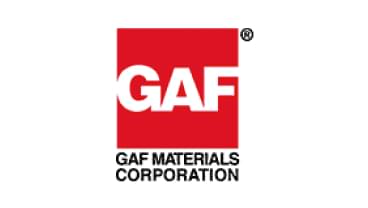General Aniline and Film Corporation (GAF)
From the 1920s to the 1980s, GAF Corporation manufactured asbestos-containing construction materials. Asbestos litigation forced the company into bankruptcy and required it to create an asbestos trust fund with $770 million to handle future claims.

-
Amount in Trust: $770 million
-
Year Trust was Created: 2009
Written by Michelle Whitmer • Edited By Walter Pacheco • Scientifically Reviewed By Sean Fitzgerald, PG
Asbestos.com is the nation’s most trusted mesothelioma resource
The Mesothelioma Center at Asbestos.com has provided patients and their loved ones the most updated and reliable information on mesothelioma and asbestos exposure since 2006.
Our team of Patient Advocates includes a medical doctor, a registered nurse, health services administrators, veterans, VA-accredited Claims Agents, an oncology patient navigator and hospice care expert. Their combined expertise means we help any mesothelioma patient or loved one through every step of their cancer journey.
More than 30 contributors, including mesothelioma doctors, survivors, health care professionals and other experts, have peer-reviewed our website and written unique research-driven articles to ensure you get the highest-quality medical and health information.
About The Mesothelioma Center at Asbestos.com
- Assisting mesothelioma patients and their loved ones since 2006.
- Helps more than 50% of mesothelioma patients diagnosed annually in the U.S.
- A+ rating from the Better Business Bureau.
- 5-star reviewed mesothelioma and support organization.
Testimonials
My family has only the highest compliment for the assistance and support that we received from The Mesothelioma Center. This is a staff of compassionate and knowledgeable individuals who respect what your family is experiencing and who go the extra mile to make an unfortunate diagnosis less stressful. Information and assistance were provided by The Mesothelioma Center at no cost to our family.LashawnMesothelioma patient’s daughter
How to Cite Asbestos.com’s Article
APA
Whitmer, M. (2024, March 25). General Aniline and Film Corporation (GAF). Asbestos.com. Retrieved April 23, 2024, from https://www.asbestos.com/companies/gaf-corporation/
MLA
Whitmer, Michelle. "General Aniline and Film Corporation (GAF)." Asbestos.com, 25 Mar 2024, https://www.asbestos.com/companies/gaf-corporation/.
Chicago
Whitmer, Michelle. "General Aniline and Film Corporation (GAF)." Asbestos.com. Last modified March 25, 2024. https://www.asbestos.com/companies/gaf-corporation/.
GAF’s History with Asbestos
Originally established in the U.S. as an American division of the German chemical conglomerate I.G. Farben, American I.G. changed its name to General Aniline and Film (GAF) Corporation in 1939.
The name change resulted from its acquisition of General Aniline Works and a merger with Agfa-Ansco Corporation, which produced photography supplies such as film.
Because of German interests in the American company, the U.S. government seized it in 1942 after the U.S. entered World War II. GAF was managed by federal government-appointed directors until 1965.
After going public in 1965, GAF acquired roofing supplies manufacturer Ruberoid Company, which later became a subsidiary known as GAF Materials Corporation. The company officially changed its name to GAF Corporation in 1968.
In the mid-1980s, the company cashed in on a housing boom that demanded the construction products in which GAF specialized. GAF Corporation later became known as G-I Holdings and spun off much of its roofing product line into a subsidiary known as Building Materials Corporation.
In what was an ill-fated acquisition, GAF’s purchase of Ruberoid brought with it a product line that contained considerable quantities of asbestos. The asbestos-containing products ranged from roofing shingles and siding to insulation and numerous other construction products.
Along with the purchase came ownership of the Ruberoid asbestos mine on Belvidere Mountain in Lowell, Vermont. In 1973, health issues caused by the asbestos mine came into the public eye. An economic feasibility study determined it would cost $1 million to retrofit the mining operations to make them safer.
By 1975, GAF ceased operations at the mine. That year, mine workers raised $2 million to buy the mine from GAF and named their business Vermont Asbestos Group. Asbestos continued to be mined at the site until 1993.
Development of the G-I Asbestos Trust
Because of its liability from asbestos claims, G-I Holdings filed for Chapter 11 bankruptcy protection on Jan. 5, 2001. It emerged from bankruptcy on Nov. 12, 2009.
As part of its reorganization, G-I Holdings funded a $770 million asbestos trust, known as the G-I Holdings Inc. Asbestos Personal Injury Settlement Trust, to address thousands of pending and future claims filed against it.
GAF was the 27th company in the U.S. to file for protection under Chapter 11 bankruptcy from liabilities concerning asbestos-related bodily injury claims.
The trust’s current payment percentage is 7.4%.

Asbestos Litigation Involving GAF
As one of the major companies facing asbestos claims in the mid-1980s, GAF helped found the Asbestos Claims Facility. It was established to evaluate, settle and defend claims related to asbestos exposure.
Although the claims facility eventually disintegrated because of conflicts among the member companies and insurers, GAF Holdings maintained a commitment to the organization and stayed with it even after it changed its mission and name to the Center for Claims Resolution.
There were more than 70,000 cases filed against GAF by the year 2000, twice as many as had been filed by 1996. By 2001, GAF settled more than 500,000 claims that cost the company approximately $1.5 billion.
In 1993, GAF reached an undisclosed settlement with 8,500 Maryland workers who sued the company claiming they developed asbestos-related diseases as a result of working with GAF’s products. Most of the workers were exposed to GAF’s products at Bethlehem Steel Corporation’s Sparrows Point steel mill.
GAF’s Asbestos Products
GAF sold painting, insulating, piping, tiling, roofing and flooring products containing asbestos, including:
- 115 insulation cement
- 203 insulation cement
- 214 insulation cement
- 313 mineral wool insulation cement
- 412 single-coat insulation cement
- Anti-Sweat pipe covering
- Frost-proof pipe covering
- Asbestos rollboard
- Asbestos millboard
- Asbestos cement roofing shingles
- Asbestos cement siding
- Airtred sheet vinyl flooring
- Asphalt tile
- Aristo insulation
- Boiler jackets
- Brick-Strip paper
- Calsilite pipe covering and block insulation
- Calsilite-Hi pipe covering and block insulation
- Calsilite SS pipe covering and block insulation
- Calsilite insulation cement
- Chrysotile asbestos fiber
- Corrugated asbestos paper
- Coverkote
- Flat asbestos paper
- Hi pipe covering
- Hearth-Glow brick
- Hooker grade fiber
- Imperial insulation
- Imperial sheet vinyl flooring
- Luran Imperial sheet vinyl flooring
- Luran Regency sheet vinyl flooring
- Luran Airtred sheet vinyl flooring
- Range boiler jackets
- Roofing felts
- Roofing paint products
- Ruberoid Air Cell
- Shingles
- Siding
- Sponge felt
- Supercell
- Supercell pipe covering
- T/NA 100 asbestos paper and plastic film
- T/NA 200 asbestos paper and plastic film
- Vermont asbestos 7M insulating cement
- Vermont asbestos fibers
- Vermont asbestos grade 115 raw asbestos fiber
- Vinylflex asbestos floor tile
- Watocel
- Woolfelt pipe covering
According to legal documents, GAF’s roofing materials, including felts, contained 60% chrysotile asbestos. Paints used as coatings on roofs contained 10% to 20% chrysotile asbestos.
GAF’s Occupations at Risk
The following occupations were at risk of exposure to GAF’s asbestos products:
- GAF asbestos miners
- GAF and Ruberoid manufacturing plant workers
- Roofers
- Flooring workers
- Construction workers
- Carpenters
- Insulators
- Painters
- Plumbers
- HVAC workers
- Power plant workers
- Oil refinery workers
- Chemical plant workers
- Metal workers
- Veterans of the U.S. armed forces
A large number of workers in the company’s Vermont asbestos mine were exposed to significant levels of asbestos and contracted a range of ailments related to asbestos exposure, including mesothelioma, lung cancer and asbestosis.
Research shows asbestos miners face a high risk of developing cancer. In 2017, a Finnish study reported cancer rates for 734 miners who had worked in asbestos mines between 1953 and 1967. Their rate of lung cancer was more than doubled, and their mesothelioma rate was more than 10 times higher than what would normally be expected.
Employees in GAF’s and Ruberoid’s manufacturing facilities were exposed to high levels of asbestos as well. Workers involved in the installation or removal of GAF’s asbestos-containing products were also exposed to dangerous levels of asbestos.
A 2022 report by the European Commission noted that in 2019 alone, over 70,000 workers died from past exposure to asbestos.
GAF’s asbestos products were used in a variety of industries. The U.S. Navy used several GAF products, including Calsilite block insulation and pipe covering, because these materials were designed for a marine environment. Oil refineries and industrial factories used Imperial insulation because it was designed to withstand high temperatures.
Workers in any number of other industries could have been exposed to asbestos-containing products manufactured by GAF Corporation, particularly those working in roofing and siding. Construction workers are among the most at risk of being exposed to these products.







